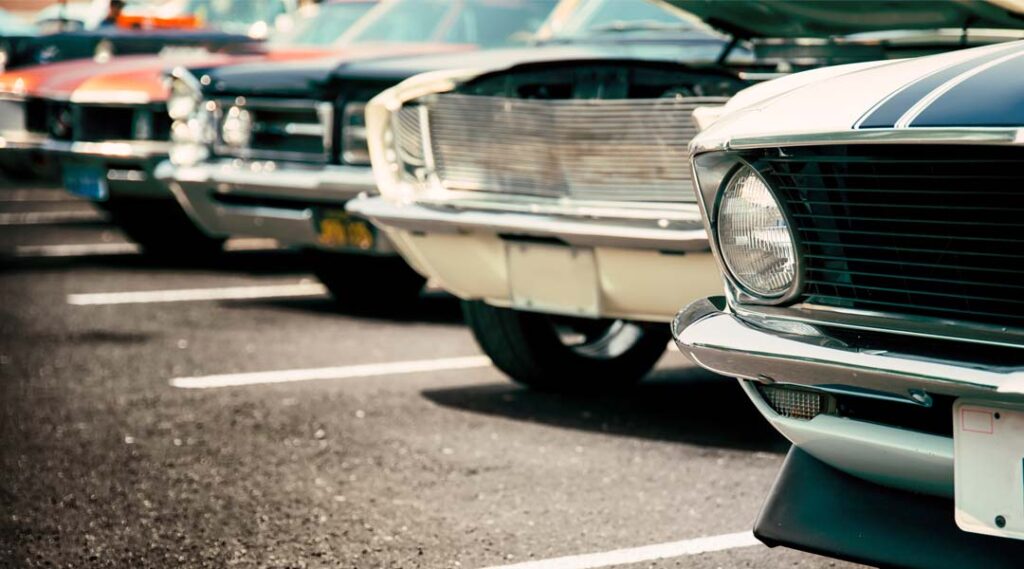This post was originally published on www.progressive.com
Are you thinking about selling your classic car this year, perhaps to free up space in your garage for that game-over, once-in-a-lifetime automotive purchase? You’re not alone. The classic car market has really heated up during the past year, with both prices and transaction volume increasing significantly. The bad news? You might end up paying more money than you expect for your next classic. The good news? You might also be surprised at what your current car is worth.
Let’s take a look at some great ways to get your car in the hands of its next owner—and also look at some tips that can help you get the most money possible regardless of where and how you choose to sell it.
What to do before you list
The vast majority of classic cars nowadays are sold to people who never see them in person prior to the final stages of the sale, which means that good, solid, honest vehicle photography goes a long way in ensuring you get the highest sale price.
1. Clean the car
Start by thoroughly cleaning the car: outside, inside, underneath, in the wheel wells, and anywhere else a potential buyer might want to see prior to completing a purchase.
Don’t worry too much about putting multiple coats of wax on a car; a camera can’t really see the difference in shine. But it is important to get a good detailing on parts of the car that will look scruffy otherwise, such as in the nooks and crannies of grilles, taillights, and vinyl tops.
2. Hire a professional vehicle photographer
Once your car is ready to go, you can enlist a professional vehicle photographer to take the 50 (or more) photos preferred by online auction companies, or you can do it yourself. If you choose the latter option, take your photographs in the hour surrounding dawn or dusk, in a clear paved lot with no trees or telephone poles to distract from the lines of the car.
After you get all of the big-picture shots showing the car from all angles, get into the details! Extensive photography of the engine bay, the underside of the car, suspension, exhaust, and other areas is always welcome.
Most people are unwilling to take photographs of a car’s rough areas because they don’t want to scare away buyers, but it’s been shown that honest and complete visual documentation of a car’s problem areas actually puts buyers at ease. So, take those photos of missing trim, surface rust, dents, dings, and anything else you can. A good guideline for what to photograph: Would I be upset if I bought this car online and didn’t know about this flaw? If the answer is “Yes!” then you should take a clear photograph of the area in question. Don’t be afraid to take too many photos; for some buyers, there’s no such thing!
Once your photography is done, fill the car with gas and make sure it’s ready for a safe test drive. Now it’s time to get it sold!
Choosing your venue
List your car online
Believe it or not, if you know what your car is worth and you’re interested in minimizing your fees, it can sometimes really pay off to start by listing your car on Craigslist, Facebook Marketplace, AutoTrader, or another low-cost listing site. This is true for almost any classic below a seven-figure valuation.
You never know … there could be a local buyer who really wants exactly what you have, and is willing to pay a fair price without getting an auction company involved. Doing this can save you hundreds or even thousands of dollars.
Online auction house
The next stop is often an online auction house. Make sure you really understand the fees and assessments involved; they can be significant. While “no reserve” auctions can often get additional bidders excited about a car, don’t be afraid to set a reserve if your car has a limited or unique set of buyers. It’s better to take a few runs at a sale than it is to sell it for an undesirable price.
Consignment dealer
A good alternative to both of the above options: a consignment dealer. Often these dealers have customers lined up for a certain kind of car, and while the fees for such an arrangement can be considerable, it’s also possible to get a higher price from the right store. There’s also greater privacy, and less hassle, in letting a dealer take all the calls and answer all the questions on your behalf.
Conventional auction
Tried all of the above with no success? Or maybe you’re just in a hurry to sell this car and move on to the next one? Then a conventional auction is a way to go. You’ll have to cover the costs of getting the car to the auction in running condition, and you’ll have some additional expenses involved, but when that hammer comes down, the deal is done and you can move on. As with online auctions, make sure you understand all of the terms and conditions involved before committing to a listing.
How to be a great previous owner
It’s always nice to be the kind of previous owner every classic car owner wishes they had—so bundle up all your service records and documentation in a binder (or three!) to go along with your car when it sells. You might be willing to take a call from the next owner, or you might not be, but it’s good to set the expectation either way at the time of sale.
Last but not least, it’s a good idea to keep your insurance active until you know all title and registration issues have been cleared by the new owner. Congratulations! You’re now free to get the next classic car of your dreams.
[ad_1]
